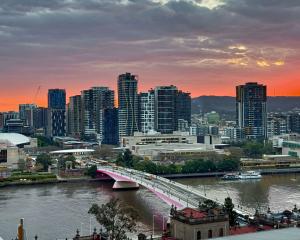
As I left the room, I respectfully bowed my head and thanked my host, Tanjkeara. His wife, Francisca, who I had met at a cock fight, had invited me into their home, impressing upon me that her husband spoke English, Dutch and Bahasa. As it was, Tanjkeara didn’t say much — he hadn’t since he had died three years ago.

Ithos, my local guide, explained more. "For us, it is important to honour those who will pass to puja, the afterlife, and to connect between the living and the dead. And here that is very expensive."
Although the Toraja are predominantly Christian — a highlands enclave in the most populous Islamic country in the world — they blend this with Alukta, the "old religion"’. It is believed that without a traditional tomate funeral ceremony, misfortune will come to the family of the deceased.
For the high caste that means constructing temporary seating and housing for hundreds of expected guests, feeding and watering the helpers in the months leading up to the funeral, and then the bloody sacrifice of at least 24 buffalo to accompany the deceased to puja. Until then, like Tanjkeara, they rest at home in a coffin.

He nodded upward. Sitting quietly in the rock balconies above us, tau tau effigies of the dead reached out with chipped wooden hands.
"It is OK, I know it is different for you, but think of it as a celebration not a sad time."
I must have been silent for a while, as Ithos sensed my wonder (or unease) and offered to take me to see his family’s tongkonan for a change of scenery.
The drive from the town of Rantepao into the countryside was a pretty one, full of rice paddies and giant bamboo, punctuated only by swerving to avoid dogs sleeping on the road.

"No no, not those," smiled Ithos, "They are only alang, rice barns. There are our tongkonan."
Facing north stood three giant houses, their distinctive shape representing the prows of ships that brought the original Toraja across the Java Sea and up the Sa'dan river.
The architectural beauty was only surpassed by the extraordinary number of buffalo horns adorning the front of the house. When it comes to tongkonan, size does matter, with social status measured by evidence of sacrificial ceremonies. As luck would have it, I was about to find out where all these buffalo came from as the Bolu market was being held in town.
The market, held unhelpfully "every six days", is a raucous affair of yelling and haggling on top of crowing and grunting. The giant buffalo pen smelt like, well you know, as close inspections started on the most prized white-faced buffalo. The cost? I could pick up a small buffalo to take home for about 14,500,000 Indonesia rupiah ($NZ1500). Something bigger? I'd be dropping a cool 50million at least.

Bolu market is also where a canny Torajan can pick up a winning investment – in the form of a rooster. Although betting on cock fighting is not officially allowed, a blind eye is turned in the case of celebrations or funerals. Before me, men crouched, holding their prized roosters before challenging others to a mock fight (no blades). By proving their rooster’s prowess, through speed and "efficiency", the men get to put more rupiah in their pocket.

The name Toraja comes from "People of the uplands" and the geology of region naturally irrigates the numerous rice terraces. As we navigated between paddies the retreating mist gave way to early morning workers, passing slowly under "Salamat Datang" signs that welcomed visitors to each village.
"You like rice?" Ithos asked half-jokingly. "Tonight, I take you to a favourite restaurant for bamboo in chicken." Not quite knowing where to expect the bamboo to be but always keen to try local delicacies, you can imagine my relief when pa’piong ayam arrived — grilled chicken minced with vegetables and extra hearty Toraja spices, all sitting in a hollowed-out bamboo shoot.

They were now on the first part of their journey to puja, but would first rest in their home, receiving visitors and guests.
Details
Where: Toraja land, South Sulawesi, Indonesia.
When: July and August are the drier months when the ma’nene cleaning is held.
How: Fly into the new Toraja Airport (TRT), one hour’s drive from Rantepao.
Stay: Toraja Misiliana Hotel, including options to stay in a Toraja Tongkonan suite.











